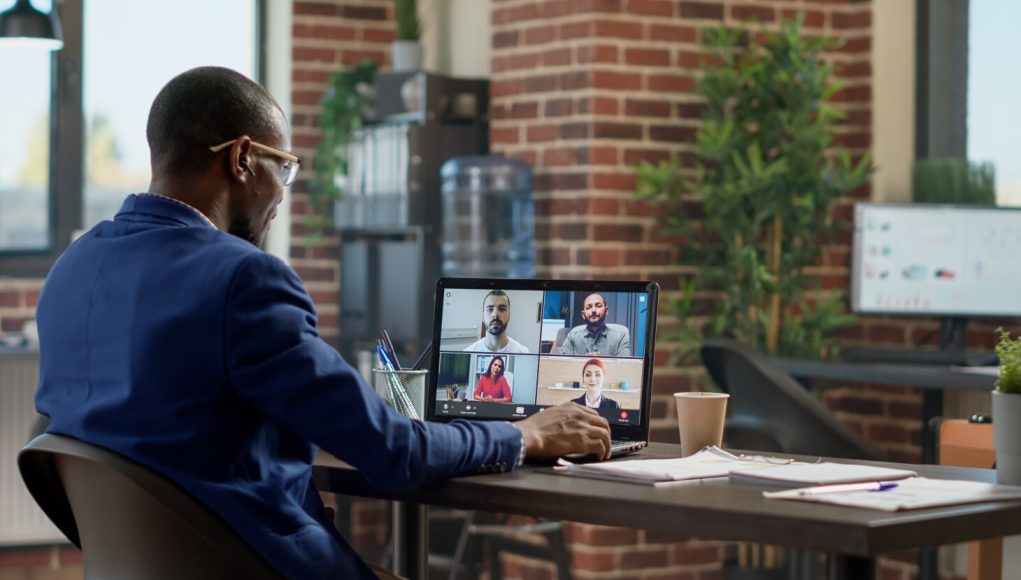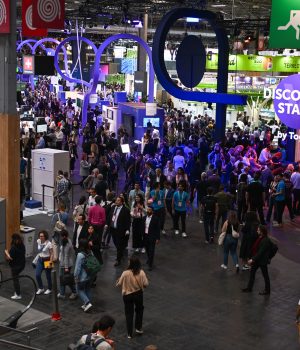Prior to 2020 and the coronavirus pandemic, corporate and client meetings were commonly an even blend between in person, over the phone, and by way of Skype, Zoom, or even Microsoft Teams. Which technology was used in what situation largely depended upon what type of material was covered in these meetings.
In looking back, this was largely because it allowed business leaders and trainers the ability to make certain that all involved in a meeting were fully informed. But once the pandemic hit, nearly every company made the shift to a virtual and, in most cases, hybrid work environment. What this did to meetings and employee or customer communication was remarkable — virtual meetings, video classrooms, and all things Skype, Zoom, Microsoft Teams, FaceTime, and more became the “new normal.”
The likes of these software options were second nature to many who have utilized them since as early as 2015; however, others had to adapt to video conferencing technology like it was a new frontier never before discovered. Our new, completely virtual environment took some getting used to, but before long, we were video conferencing for every little piece of each puzzle we worked through.
But this undoubtedly has led to what we refer to as being “Zoomed out,” no matter what your role is in your individual industry. But being “Zoomed out” in recent years has already proven to be a completely solvable problem, and with a little exponential thinking from my Anticipatory Leader System coupled with some new software applications, another “new normal” for virtual meetings, training, and more has begun.
Understanding Zoom fatigue
The reason many quickly experienced video conferencing fatigue was the result of our whole lives, not just our professional lives, having to be virtual overnight. We watched performances from our favorite music artists via livestream to get our concert fix, met with family members via video conferencing, took online classes that ordinarily would have been attended in person, and so much more.
In addition to video, we already had virtual and augmented reality video games for entertainment, and now instead of putting our phones down and going to a local restaurant for fellowship, we used them to order DoorDash or curbside pickup. Everything was through a screen, so come each Monday morning, employees and executives alike would have a slew of meetings via video conferencing, of which they began to tune in and drop out so to speak.
Many business executives picked up on this employee exhaustion as a Hard Trend future certainty, regardless of when the pandemic would end. If Zoom, Microsoft Teams, and other video conferencing software were here to stay, alternatives to those occasional, extremely brief meetings that take more work to put together than to host were a must.
In lieu of this, their leadership mindset shifted to one of anticipation, hoping to pre-solve video meeting exhaustion by simplifying meetings that are too complex to be an email but far too simple to be a full-blown, live organization of employees, customers, and executives. This led to understanding and leveraging the benefits of screen recording and remote collaboration technologies like Loom, Vimeo, and others.
Zoom Fatigue solved: simple screen recordings
The connectivity of 5G, smartphones, and a multitude of other accelerated digital disruptions have converged to give individuals ease of access to both information and, in the case of virtual and hybrid workspaces, each other like never before. This is why virtual meetings of any kind are a Hard Trend future certainty — the ease of connecting so many clients, co-workers, and customers throughout projects every single time they think of a change.
Software like Loom and websites like Vimeo not only allow business leaders to implement exponential thinking in better solutions for employees’ and clients’ Zoom fatigue, but they also utilize my “Skip It Principle” by providing a service that lets users simply record a demo video and share it with a client collaboratively.
This is contrary to taking screenshots and trying to either email a description, calling the individual recipient to walk them through what they were looking at, or most recently, schedule a Zoom call every time something simple needs discussing.
Essentially, screen capture software of any kind offers the benefit of video conferencing without having it in real time. What a simple solution to Zoom fatigue!
Now a recipient can simply open and watch a screen recording and, in the event there are further questions regarding the content, schedule a live video call to clear them up. Since 2015, and thanks to the rapid acceleration of digital disruptions caused by the pandemic, screen recording software and the collaborative, remote workspaces that come with them have grown to 14 million users across 200,000 corporations.
No different than email? Video conferencing was a Hard Trend
As mentioned above, the likes of Loom and other screen-recording software was not founded as an agile response to Zoom fatigue during the pandemic. This software was founded by utilizing my Hard Trend Methodology and pre-solving problems by analyzing Hard Trend future certainties that the owners knew would be hitting the world one day.
The Hard Trend here was not only a rise in video conferencing, but a rise in digital communication in general. As both video conferencing software and screen recording programs emerged as early as 2015, consider what digital technologies already existed for some time: Email, mobile phones (smartphones and on some, FaceTime), computers with webcams, the internet, social media, and more.
The entrepreneurs behind screen recording software saw that digital communication would only increase and decided to pre-solve a professional problem in ways that would be exponential, unbeknownst to them at the time.
Using screen recordings exponentially
Of course, work projects and collaborations across a hybrid work environment is any type of screen recording software company’s bread and butter, but as an Anticipatory Leader who thinks exponentially, can you identify different ways to leverage the likes of Loom, Vimeo, and others for different purposes? Let me give you one idea to start.
The pandemic has brought on what is being referred to as the Great Resignation, as I have written about recently. In that, many have taken to freelance work, especially in roles that likely could have been fully remote long before global lockdowns and safer-at-home orders. Marketing, for instance, is a notable one. Marketing departments looking to outsource certain tasks to independents and small business owners can leverage screen recording software in the way of assurance that work is getting complete.
For instance, they could sign up a freelance or remote worker for a software like Loom and have them record what they are working on, instead of leaving it up to them to document their hours in a spreadsheet or via invoice. Perhaps accounting departments can benefit from this exponential use as well, knowing how to document independent work more efficiently.
In all of this, let’s not forget that another integral component to my Anticipatory Leader System is to be human.
Zoom fatigue isn’t the real problem in many cases; screen fatigue is.
As the pandemic slows a bit more every day, we should all remember that we live in a hybrid, Both/And world.
There is an appropriate time for live video conferencing and a time for simple screen recordings, just as there is a time for in-person meetings and conversation.
For more business and entrepreneurship tips, subscribe to our weekly newsletter and follow us on Twitter, Facebook, Instagram and LinkedIn.






